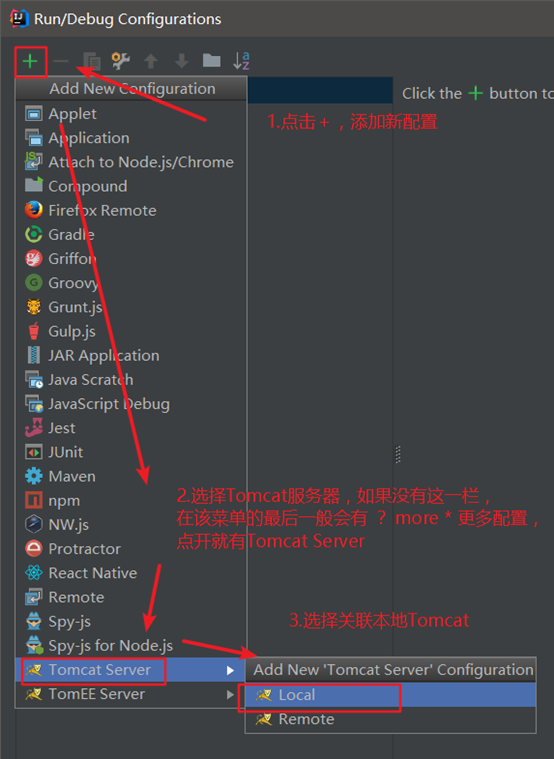

- #JREBEL TOMCAT 7 HOW TO#
- #JREBEL TOMCAT 7 INSTALL#
- #JREBEL TOMCAT 7 PATCH#
- #JREBEL TOMCAT 7 CODE#
- #JREBEL TOMCAT 7 FREE#
Instead, you need to install a special version of the JDK that you can download from here.
#JREBEL TOMCAT 7 PATCH#
Install DCEVM in Java 11įor Java 11, there is no patch program.

In general this should not be a big problem if you run it only on a development machine which usually sits protected behind a corporate firewall. Of course, using an ancient version of the JDK introduces a certain security risk. You can find archived versions of the JDK here. The DCEVM provided on Github will simply not work with later versions. Important note for Windows: the latest supported version of Java 8 is 1.8.0_u 181. A special version of the main jvm library is installed (in jre/lib/dcevm/) which is used instead of the vanilla library when starting the JVM with this command line argument: java -XXaltjvm=dcevm -version Patching the JDK in this way does not alter the Java VM itself. Therefore I recommend the other choice in the patcher program, Install DCEVM as altjvm. If you select the replace option, you won’t need the -XXaltjvm argument in your program launch VM arguments but you also won’t be able to switch hotswapping off. The patcher program offers you a choice to either replace the standard JVM with DCEVM or install DCEVM alongside as altjvm. The patcher program itself is a Java jar called DCVM-8u181-installer-build2.jar which you can download from here. Download the patcher program, start it and then select the directory where your JDK lives in order to patch it. You can turn an existing installation of the JVM into a DCEVM version by patching it. add VM arguments to your launcher to activate both DCEVM and Hotswap Agent.To sum it up, in order to do hotswapping you will need to Hotswap Agent ensures that such frameworks respond correctly to the reloading of classes. In the case of Hotswap Agent, the capabilites involve dealing with all kinds of frameworks that have their own system of classloaders such as Spring, Tomcat etc. A Java Agent is a component that provides instrumentation capabilities to an application. Then there is a separate Java Agent, called Hotswap Agent. It is implemented as an alternative version of one of the dynamic link libraries used by the JVM, jvm.dll for Windows and libjvm.so for linux.
#JREBEL TOMCAT 7 CODE#
The name stands for Dynamic Code Evolution Virtual Machine. In the case of DCEVM / Hotswap Agent, this is the DCEVM part. Suffice to say that it takes a special version of the JVM to be able to do this. What goes on exactly with lists, tables and references in the inner workings of the JVM is highly technical stuff and to be honest, I haven’t really looked into it. In order to make the reloaded class totally replace the originally loaded class in the JVM, all kinds of updates must be made to the metadata that your JVM keeps track of for loaded classes. When you edit your Java code and let your IDE recompile the affected sources the changes are picked up and the changed classes are reloaded into the JVM, while the process using those classes remains running.

The tool monitors your classpath looking for changes in classfiles. Here is a quick comparison based on my own research: ChangeĪdd, remove and modify static field value
#JREBEL TOMCAT 7 FREE#
It can do most of the things JRebel does, is open source and free as in free beer.
#JREBEL TOMCAT 7 HOW TO#
In this article I will introduce DCEVM / Hotswap Agent and explain how to use this toolset. It works great, and there is no doubt that this is a very useful weapon in the Java developers arsenal. There are some third party tools available that can interfere with the inner workings of the JVM and make it possible to reload classes with a much broader range of changes. If you add, remove or rename methods, change their arguments, or make other changes to your code the JVM has no way of reflecting those changes in the loaded classes of the running process. The capabilities of your standard vanilla JVM are limited to being able to hotswap the code for a method body and not much else. The Java JVM supports hotswapping out of the box but in a very modest way. It works by recompiling and reloading the changed classes. It allows you to see the effect of code changes while the application remains up and running. Hotswapping Java code is a technique that can save a lot of programmer down time when you’re working with humongous web applications that take forever to start up.


 0 kommentar(er)
0 kommentar(er)
